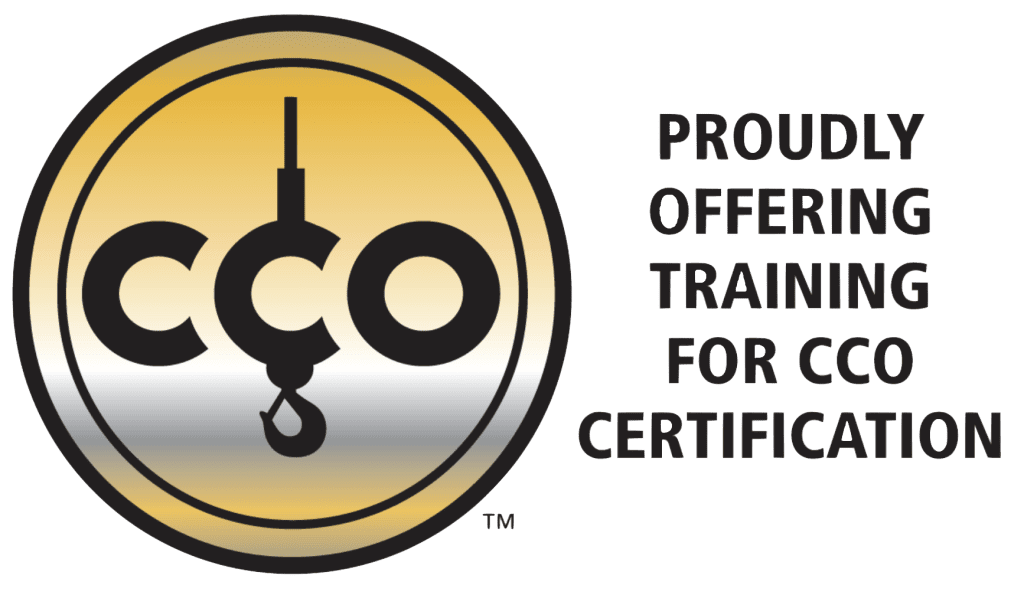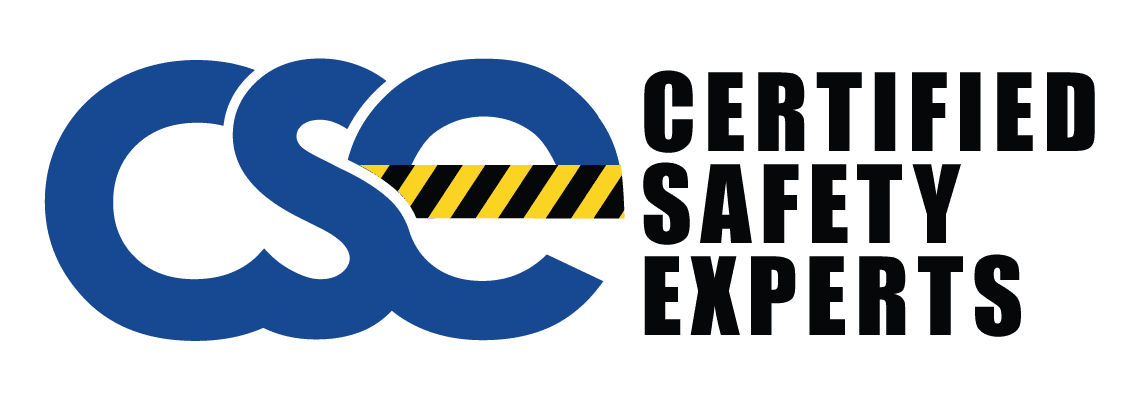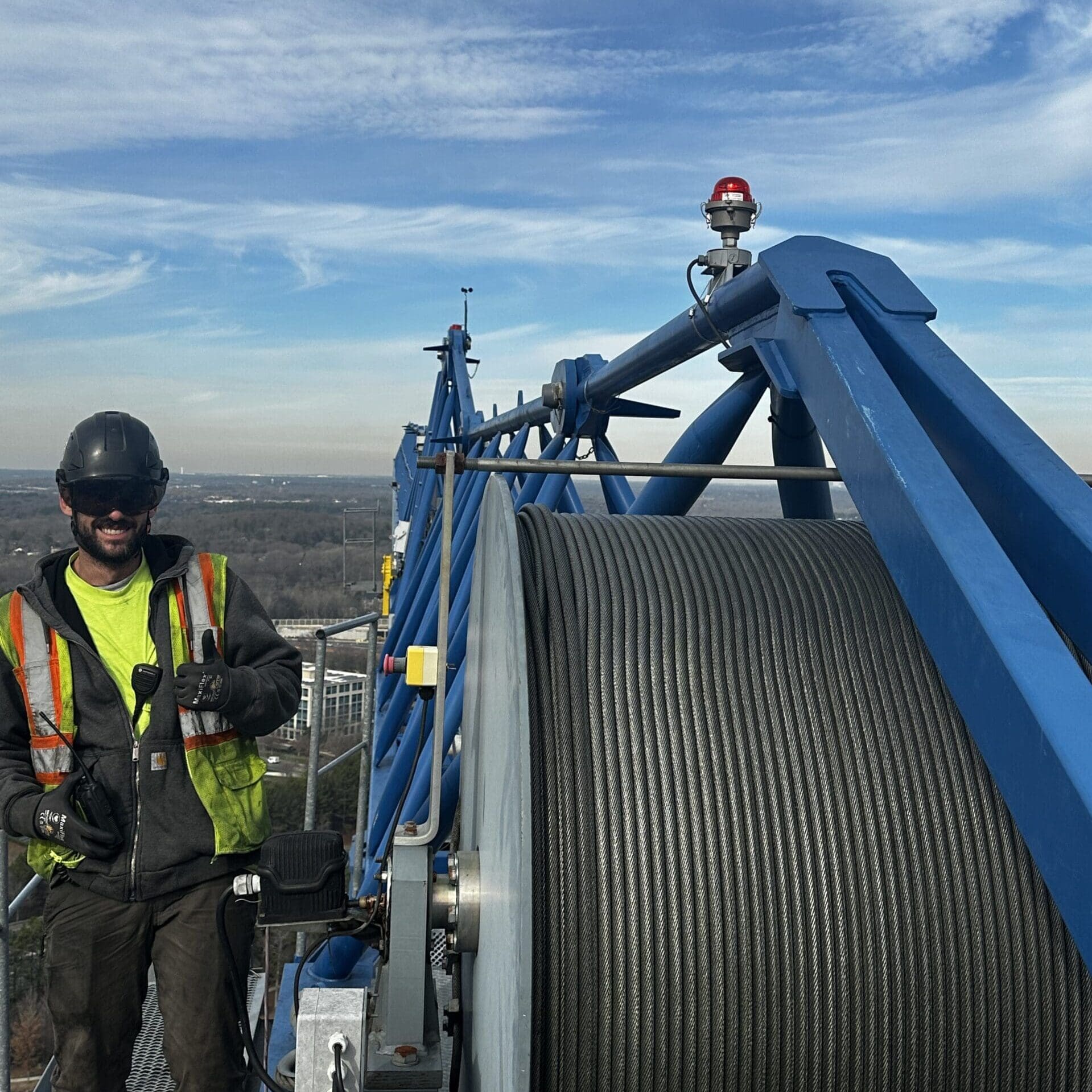Keeping cranes in good working order is super important. It’s not just about making sure the equipment runs smoothly, but also about keeping everyone on the job site safe. That’s where a solid crane inspection checklist comes into play. Think of it as your go-to guide for making sure everything is checked, double-checked, and up to snuff. We’ll walk through what you need to know to make sure your cranes are safe and you’re following all the rules.
Key Takeaways
- Using a proper crane inspection checklist helps make sure every part of the crane is looked at. This keeps the equipment in good shape and prevents problems.
- Daily checks are for spotting obvious damage, while bigger annual reviews look at the crane’s structure and systems more closely. Both are needed.
- You’ve got to know what OSHA says about crane inspections. This means understanding the rules for different crane types and making sure your inspectors are trained.
- Keeping good records of all inspections and maintenance is really important. It shows you’re being careful and helps you track the crane’s history.
- Watch out for common issues like loads falling, electrical problems, or overloading the crane. A good checklist helps you catch these before they cause trouble.
Understanding Crane Inspection Essentials
When you’re working with cranes, safety really is the top priority. It’s not just about following rules; it’s about making sure everyone goes home safe at the end of the day. That’s where a good crane inspection checklist comes into play. Think of it as your go-to guide for keeping these powerful machines in good working order.
Key Elements of a Comprehensive Crane Inspection Checklist
A solid checklist covers all the bases. It’s not just a quick glance; it’s a detailed look at the crane’s condition. You’ll find items that cover everything from visible damage to how the controls are working. A good checklist makes sure no part is overlooked, helping to catch small issues before they become big problems. It’s a tool that helps inspectors be thorough and consistent.
Purpose of Regular Crane Inspections
Why do we bother with these inspections? Well, the main reason is safety. Regular checks help find wear and tear, potential mechanical failures, or damage that could lead to an accident. Beyond safety, inspections also help keep the crane running efficiently, reducing downtime and costly repairs. It’s all about proactive maintenance. Regular inspections are the backbone of a safe lifting operation.
Impact on Workplace Safety
When cranes are inspected properly and regularly, the workplace becomes a much safer environment. It means fewer surprises, fewer breakdowns, and most importantly, fewer accidents. This directly protects workers from injuries that could happen if a crane malfunctions. It also contributes to a more reliable workflow because you’re not dealing with unexpected equipment failures. You can find more details on daily checks at daily pre-operation inspections.
A well-maintained crane is a safe crane. It’s that simple. Ignoring inspections is like playing with fire when you’re handling heavy loads.
Here’s a quick look at what a typical inspection might involve:
- Checking for any visible cracks or damage on the main structure.
- Testing all operational controls, including emergency stops.
- Examining wire ropes and chains for signs of wear or damage.
- Verifying that all safety labels and warning signs are present and readable.
- Checking fluid levels in hydraulic systems.
Daily and Frequent Crane Checks
Alright, let’s talk about the day-to-day stuff when it comes to keeping cranes in shape. You can’t just wait for the big annual check-up; there’s a lot of routine work that needs doing. Think of it like checking your car’s oil and tire pressure regularly – it prevents bigger headaches down the road.
Daily Checklist Items for Visible Damage
Every single day, before the crane even starts lifting anything, a quick visual scan is a must. You’re looking for anything that just doesn’t look right. This includes checking the:
- Wire ropes: Are there any broken wires, kinks, or signs of fraying? Even small damage here can be a big problem.
- Hooks and latches: Make sure the latch is working properly and the hook itself isn’t cracked or deformed.
- Structural parts: Give the main beams, trolley, and hoist a once-over. Look for any obvious cracks, dents, or loose bolts.
- Fluid levels: If it’s a hydraulic crane, check the oil levels. Low fluid can mean leaks or system issues.
Frequent Inspection Focus Areas
Beyond the daily visual check, there are things you’ll want to look at more often, maybe weekly or bi-weekly, depending on how much the crane is used. These are still relatively quick checks but go a bit deeper than just looking.
- Brakes: Test the hoist and travel brakes. Do they stop the load smoothly and hold it securely?
- Limit switches: These are safety devices that stop the crane from over-traveling. Make sure they’re functioning correctly.
- Control systems: Test all the controls – the pendant, radio remote, or cabin controls. Do they respond accurately?
- Warning devices: Horns, lights, alarms – are they all working as they should?
It’s really about being proactive. Catching a small issue early, like a slightly worn brake pad or a loose wire, is way easier and cheaper than dealing with a breakdown or, worse, an accident.
Operational Controls and Emergency Stops
This is super important. You need to be absolutely sure that the operator can control the crane precisely and, more critically, that the emergency stop buttons actually work. During your frequent checks, actually press each emergency stop button to confirm it cuts power to the crane immediately. Also, test the directional controls to make sure they respond as expected without any lag or sticking. Having reliable controls means the operator can do their job safely and efficiently. You can find free checklists to get you started with these inspections, which can be a good baseline for your crane inspection.
In-Depth Periodic and Annual Crane Reviews
While daily checks are good for catching immediate issues, the real meat of keeping a crane safe and running smoothly comes with the more in-depth periodic and annual reviews. These aren’t just quick looks; they’re thorough examinations designed to catch problems that might not be obvious on a day-to-day basis. Think of it like a car’s annual service versus just checking the tire pressure. You need both, but the annual service really gets into the nitty-gritty.
Annual Inspection Requirements for Structural Integrity
This is where we really look at the bones of the crane. Inspectors will be checking all the main structural parts – the boom, the jib, the frame, the outriggers, all of it. They’re looking for any signs of stress, like cracks that might be forming, or any corrosion that’s eating away at the metal. Loose bolts or rivets are also a big red flag here. It’s all about making sure the crane can handle the loads it’s designed for without bending or breaking.
Comprehensive Evaluation of Electrical and Hydraulic Systems
Cranes are complex machines, and their electrical and hydraulic systems are no exception. During an annual inspection, a lot of attention goes into these systems. For electrical parts, inspectors check for any signs of wear, like pitting on contactors or deterioration in limit switches and push-button stations. It’s about making sure the controls are responsive and safe. On the hydraulic side, they’ll be checking fluid levels, looking for leaks, and making sure all the pumps, valves, and cylinders are working as they should. Any issues here can lead to sudden, uncontrolled movements, which is obviously bad news.
Detailed Examination of Load-Carrying Mechanisms
This part focuses on everything that directly interacts with the load. We’re talking about the hoist drums, the wire ropes, the pulleys (sheaves), and the hook itself. Inspectors will check for excessive wear on these components. Are the ropes frayed or kinked? Are the sheaves worn down or cracked? Is the hook bent or damaged, and does the safety latch work properly? Even the brake system gets a close look – checking linings, pawls, and ratchets for wear. These are the parts that are under the most stress, so keeping them in top shape is absolutely vital.
These in-depth reviews are not just about fixing what’s broken; they’re about preventing failures before they happen. It’s a proactive approach to safety that saves time, money, and most importantly, lives.
Here’s a quick rundown of what’s typically scrutinized:
- Structural Components: Deformed, cracked, or corroded members; loose bolts or rivets.
- Load-Carrying Parts: Cracked or worn sheaves and drums; excessive wear on brake system parts.
- Electrical Systems: Signs of pitting or deterioration on controllers, limit switches, and push-button stations.
- Hydraulic Systems: Fluid levels, leaks, and overall component performance.
- Indicators: Load, wind, and other indicators checked for accuracy.
- Power Plants: Proper performance of gasoline, diesel, or electric power units.
Adhering to OSHA Crane Inspection Standards

OSHA Guidelines for Different Crane Types
OSHA has specific rules for crane inspections, and these can vary a bit depending on the type of crane you’re working with. For instance, mobile cranes have different requirements than tower cranes or overhead cranes. The main goal is always to make sure the equipment is safe for operation. This means checking things like the boom, outriggers, and load charts for mobile cranes, while overhead cranes need checks on their runways, trolleys, and hoist mechanisms. It’s really about understanding the unique risks each crane type presents and making sure the inspections cover those specific areas. Staying current with these guidelines is a big part of keeping your worksite safe.
Inspector Qualifications and Training
So, who exactly is allowed to sign off on a crane inspection? OSHA makes it clear that the person doing the inspection needs to be qualified. This doesn’t just mean someone who’s been around cranes for a while. They need formal training. This training should cover things like safety codes related to cranes, understanding federal and state rules, knowing safe operating practices, and how to properly document everything. Think of it like needing a license to drive a car; inspectors need the right knowledge and training to do their job correctly. A qualified person is someone who can spot problems and knows what needs to be done about them. It’s a serious responsibility, and the training reflects that.
Ensuring Compliance with Safety Regulations
Following OSHA standards isn’t just about avoiding fines, though that’s a good reason. It’s primarily about preventing accidents and injuries. When you stick to the inspection rules, you’re actively working to make your job site safer. This involves making sure your inspection checklists are up-to-date and cover all the necessary points for your specific crane. It also means keeping really good records of every inspection and any maintenance that’s done. These records act as proof that you’re taking safety seriously and following the rules. Having a solid system for compliance means fewer surprises and a more secure environment for everyone involved in crane operations.
Keeping up with OSHA standards for crane inspections is a continuous process. Regulations can change, and new best practices emerge. Regular training and staying informed are key to maintaining a safe and compliant operation.
Here’s a quick rundown of what inspectors typically look for:
- Structural Integrity: Checking for cracks, deformation, or excessive wear on the crane’s frame, boom, and other structural parts.
- Mechanical Components: Inspecting brakes, clutches, gears, and wire ropes for proper function and signs of wear.
- Electrical Systems: Examining wiring, control panels, and power sources for damage or faults.
- Hydraulic Systems: Checking for leaks, proper fluid levels, and the condition of hoses and cylinders.
- Safety Devices: Testing limit switches, overload indicators, and emergency stops to confirm they are working correctly.
- Load-Bearing Parts: Thoroughly inspecting hooks, chains, slings, and rigging for any damage or defects.
Maintaining Accurate Crane Maintenance Records
Keeping good records for crane maintenance isn’t just about following the rules; it’s about knowing your equipment inside and out. Think of it like a medical chart for your crane. You need to know its history – what work it’s had done, when it was inspected, and if any parts were swapped out. This information helps you spot trends, predict when something might need attention, and makes warranty claims a lot smoother if you ever need them.
Documenting Maintenance Tasks and Findings
Every time you do maintenance or an inspection, write it down. What exactly did you do? What parts did you replace? Did you find anything that looked a bit off? Be specific. For example, instead of just saying “checked brakes,” write “inspected brake pads, found 3mm wear on left pad, adjusted.” This level of detail is super helpful later on. It’s best to do this right after the work is finished, so nothing gets forgotten.
Importance of Detailed Record-Keeping
Why bother with all this detail? Well, for starters, it’s what the law often requires. But beyond that, accurate records show you’re being responsible. If something goes wrong, these records can prove you’ve been taking care of the crane. Plus, it helps you budget for future repairs and replacements. A well-maintained record system is a cornerstone of safe and efficient crane operation.
Inspection Documentation and Reporting Procedures
When an inspection is done, you need a formal report. This report should clearly state what was checked, what was found (both good and bad), and any recommendations for repairs or further action. It’s like a formal report card for the crane. Make sure these reports are filed properly and are easy to access when needed, especially if an auditor comes asking. It’s also a good way to communicate findings to the rest of the team so everyone’s on the same page about the crane’s condition.
Identifying Common Crane Safety Hazards
Operating cranes involves inherent risks, and being aware of common safety hazards is the first step toward preventing accidents. Ignoring these potential dangers can lead to serious injuries, fatalities, and significant damage to equipment and property. It’s about being proactive and spotting trouble before it starts.
Mitigating Risks of Falling Loads
Falling loads are a major concern. They can happen for many reasons, like operator error, equipment malfunction, or even just a poorly secured load. When a load drops, it’s not just the load itself that’s at risk; anyone below could be seriously hurt. Regular checks on the hook, latch, and the integrity of the hoist mechanism are vital. Also, making sure operators are properly trained on load capacity and secure rigging practices is key. Never assume a load is within the crane’s limits; always verify.
Preventing Electrical Hazards During Operation
Cranes, especially those with metal structures, can become conductors if they come into contact with power lines or other electrical sources. This poses a severe electrocution risk to the operator and anyone nearby. It’s important to clearly mark areas around overhead power lines and maintain safe distances. Operators need to be aware of their surroundings and understand the potential for electrical contact. Proper grounding and regular inspection of electrical components on the crane itself are also necessary.
Avoiding Overloading and Mechanical Stress
Overloading a crane is a common mistake, often stemming from a lack of precise weight information or an operator’s overconfidence. Exceeding the rated capacity puts immense stress on the crane’s components, potentially leading to catastrophic failure. Always confirm the weight of the load and compare it against the crane’s lifting chart. Using load cells or other weighing devices can provide accurate measurements. It’s better to be safe and get a second crane if the load is too heavy than to risk a major incident. Remember, even slight overloads over time can cause wear and tear that isn’t immediately visible but can lead to future problems. Proper maintenance and adherence to load limits are non-negotiable for safe crane operation. You can find more information on safe crane practices at OSHA crane standards.
Crane Inspection Checklist Implementation
Getting a crane inspection checklist set up and actually used is more than just ticking boxes; it’s about making sure the right people are doing the right checks, the right way. It’s about making the whole process work smoothly for everyone involved.
Tailoring Checklists to Specific Crane Types
Look, cranes aren’t one-size-fits-all, right? A massive tower crane on a skyscraper job site has different needs than a smaller overhead crane in a factory. So, your checklist needs to reflect that. You can’t just grab a generic list and expect it to cover everything. You’ve got to look at the crane’s specific design, how it’s used, and any particular risks associated with it. For example, a mobile crane might need more focus on its outriggers and tires, while an overhead crane might need more attention to its runway and trolley system. Making sure the checklist fits the crane is step one.
Crane Inspection Software vs. Paper-Based Methods
This is a big one for efficiency. You can stick with the old-school paper checklists, which means printing them out, filling them in by hand, and then typing all that info into a computer later. It works, but it can be slow, and you end up with stacks of paper. Or, you can look into crane inspection software. These digital tools let you fill out checklists right on a tablet or phone, often letting you snap photos of any issues. The data goes straight into a report, cutting down on manual entry and speeding up communication. It’s usually a lot easier to keep track of records this way too.
Responsibilities During an Inspection
Who does what? That’s important. Usually, the crane operator or a designated maintenance person does the daily checks. They’re the ones who see the crane every day. For the more in-depth annual inspections, you’ll likely need a certified inspector, someone who really knows their stuff about crane mechanics and safety regulations. It’s good to have a clear understanding of who is responsible for what part of the inspection process, from the initial check to signing off on the report. This avoids confusion and makes sure nothing gets missed.
Having a clear plan for who is responsible for each inspection task, from daily checks to annual reviews, helps prevent oversight and ensures accountability throughout the process. It’s about making sure the right eyes are on the right parts at the right time.
Wrapping Up Crane Safety
So, keeping up with crane inspections isn’t just about following rules, though that’s a big part of it. It’s really about making sure everyone goes home safe at the end of the day. Using a good checklist, whether it’s daily checks or the more in-depth annual ones, helps catch problems before they become serious issues. Remember, trained inspectors and good records are your best friends here. Sticking to this routine keeps your equipment running right and, more importantly, keeps your crew out of harm’s way. It’s a solid way to build a safer workplace for everyone involved.
Frequently Asked Questions
What exactly is a crane inspection?
A crane inspection is like a doctor’s check-up for a crane. It’s a detailed look to make sure all its parts are working safely and correctly. This helps prevent accidents and keeps workers safe on the job.
Why are crane inspections so important for safety?
Regular crane checks are super important because cranes lift heavy things. If a crane breaks or something goes wrong, it could cause serious harm or damage. Inspections catch problems early, like worn-out parts or safety issues, before they become dangerous.
What kinds of things are checked during a crane inspection?
A good inspection checklist covers everything from the crane’s main structure to its smallest parts. It includes checking for any cracks or damage, making sure the controls work right, looking at the ropes and chains, and testing safety features like emergency stops.
Are there specific rules, like from OSHA, for crane inspections?
Yes, there are official rules, mainly from OSHA (Occupational Safety and Health Administration), that say how often cranes need to be inspected and what needs to be checked. These rules help make sure everyone follows the same safety standards.
Who is qualified to perform a crane inspection?
Certified crane inspectors are people who have special training and know a lot about how cranes work and the safety rules. They are qualified to do thorough checks and know what to look for to make sure the crane is safe to operate.
Why is it important to keep records of crane inspections and maintenance?
Keeping good records means writing down every time a crane is inspected, what was found, and any repairs that were done. This helps track the crane’s history, shows that it’s being maintained properly, and is important for following safety rules.




